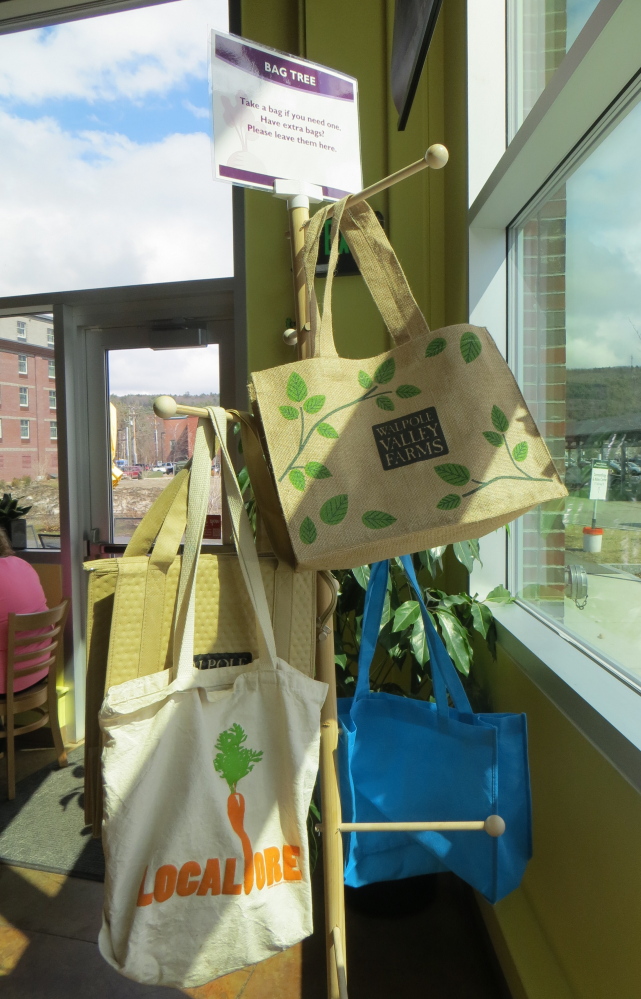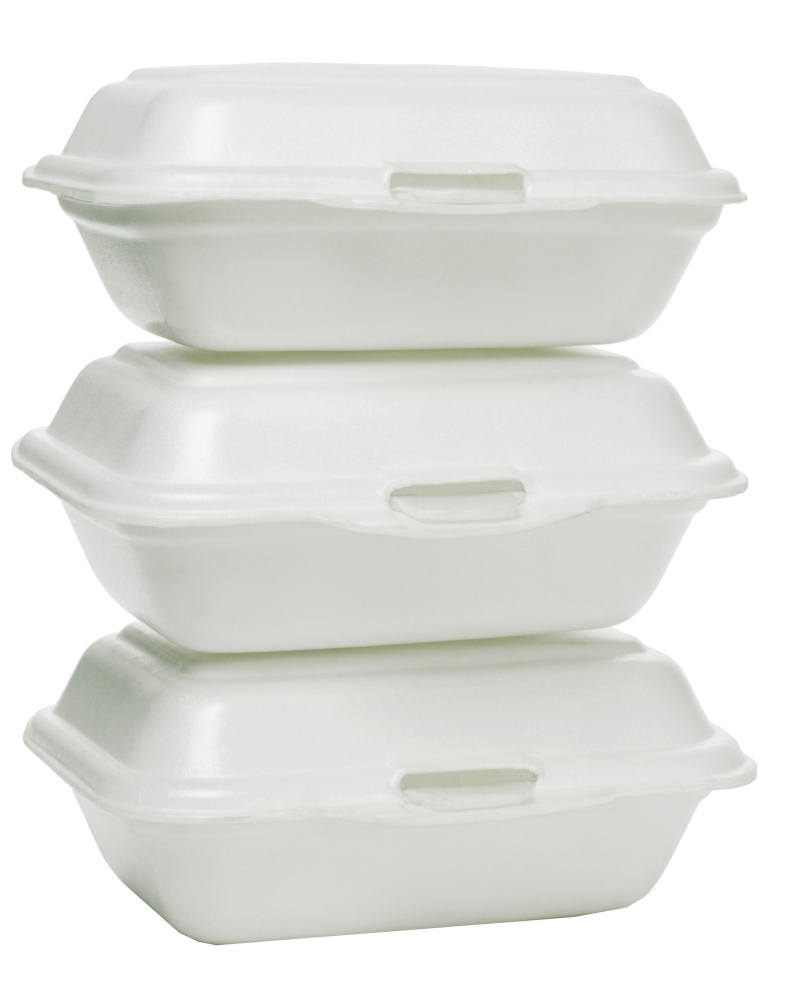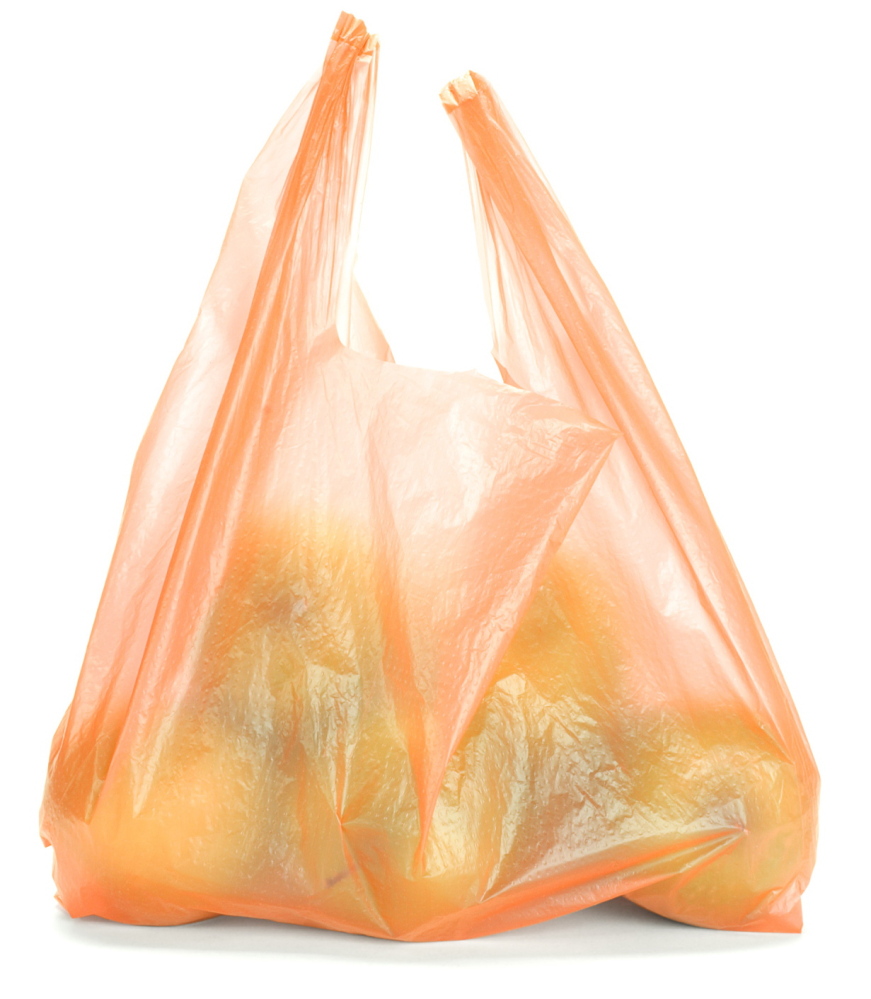When we buy takeout food, we know we’re paying a price for convenience – trading extra money for the time we save. What we pay at the register, though, does not begin to account for the true cost of our choice. We typically use expanded polystyrene (foam) food containers and plastic bags just once, for a matter of minutes, yet they endure for centuries.
These plastics are challenging to recycle, generate toxins when incinerated, and easily go airborne – littering roadsides, clogging storm drains, harming wildlife and accumulating in ocean gyres (systems of ocean currents). In Maine’s 2012 Coastal Cleanup, volunteers collected 3,954 food containers/wrappers and 2,562 plastic bags along six shoreline miles. Extrapolate those averages along Maine’s entire shoreline, and you get 1.5 million bags and 2.3 million plastic containers.
What long-term price are we willing to pay for the short-term convenience of plastic packaging? There’s no easy answer, and the data to guide a decision are notably absent in Maine. The state has tried – and failed – to get solid numbers on the plastic bags that stores distribute annually and collect for recycling. Shelley Doak, executive director of the Maine Grocers Association, says that trade groups and the state set “some pretty ambitious goals and made some lofty assumptions” about reducing bag use. But diverse retail accounting systems stymie attempts to set baseline numbers and reach reduction goals.
100 BILLION BAGS
While Maine bag counts are elusive, national ones are staggering: Americans use more than 100 billion plastic shopping bags annually, of which less than 1 percent is recycled (according to a Clean Air Council study).
Under Maine law, stores that distribute plastic bags must have a receptacle for collecting them and must ensure that returned bags get recycled. A few retail chains do take this law seriously, but the returned bags are not a popular item among recyclers.
The lightweight bags (either No. 2 high-density polyethylene or No. 4 low-density polyethylene) have little market value and are “a harder material to process,” notes Frank Gallagher, communications director at EcoMaine. They routinely get caught in sorting machinery, requiring staff to shut sorters down and cut the bags out. Mixed plastics are trucked out of state to processing facilities where some are converted into plastic lumber (a “downcycling” process to a lower-grade plastic with limited utility).
As for expanded polystyrene, don’t be misled by what looks like a recycling symbol around the number 6. These “coding” symbols do not actually mean the product is recyclable, and less than 1 percent of polystyrene nationally is recycled. EcoMaine does not accept No. 6 plastics due to prohibitive shipping costs: “You’re basically transporting air,” Gallagher says. Nor can foam food packaging be reused. His recommendation? “Avoid using it.”
EcoMaine promotes a “waste hierarchy” that prioritizes “Reduce” and “Reuse” over “Recycle.” With petroleum-based products, Gallagher says, we should “avoid using resources that don’t need to be used.”
Many places around the world are reaching the same conclusion, and are either taxing or banning these problematic plastics. More than 100 cities nationwide have taken such steps, and California will implement the first statewide ban on plastic shopping bags next year. Locations with bans find use drops by 60 percent to 90 percent, far less litter accumulates, and businesses have few complaints.
Maine has a case study of its own: Freeport enacted an ordinance banning polystyrene food containers nearly a quarter-century ago. Schoolchildren proposed the measure, and it passed over the objection of a major fast-food chain. “The students had done their research,” observes Freeport Town Planner Donna Larson, “and people felt ‘we need to support our kids.’” Businesses readily found alternatives, she says, and today “it’s not a hot topic. It’s just the way things are done.”
LESSONS FROM FREEPORT
The lesson from Freeport seems to be that once a ban on plastic packaging is in place, people adjust. Retailers comply, consumers change their habits and life goes on. Even major chains – like Dunkin’ Donuts – are realizing the need to pursue alternatives. Sam’s Club and Whole Foods have chosen not to offer plastic bags.
While remembering reusable bags can be a challenge for consumers, retailers like Hannaford have increased signage to remind shoppers. More stores could follow the lead of New Hampshire’s Monadnock Food Coop, which has created a “bag tree” where people can borrow reusable bags if they forget – and return them the next time they shop.
If Maine tries to implement taxes or bans town by town, there will be 495 opportunities for naysayers to decry the supposed economic devastation wrought by these modest changes. Maine would be better off renewing its Dirigo (Latin for “I lead,” the state motto) image as a national environmental leader. It could enact phased-in statewide bans on plastic shopping bags and foam food containers – sidestepping the accounting headaches of local fees.
This move makes economic sense, given that tourist dollars generate roughly one-fifth of Maine’s GDP. Generating less plastic waste helps preserve the unspoiled beauty that lures visitors here, and enhances our own quality of life. In a world with diminishing resources and growing ecological challenges, relinquishing wasteful plastics is – as Freeport recognized – a simple measure we can take to support our kids and their future.
Send questions/comments to the editors.





Success. Please wait for the page to reload. If the page does not reload within 5 seconds, please refresh the page.
Enter your email and password to access comments.
Hi, to comment on stories you must . This profile is in addition to your subscription and website login.
Already have a commenting profile? .
Invalid username/password.
Please check your email to confirm and complete your registration.
Only subscribers are eligible to post comments. Please subscribe or login first for digital access. Here’s why.
Use the form below to reset your password. When you've submitted your account email, we will send an email with a reset code.